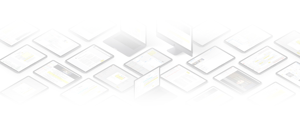
Today’s Featured Pro is Joel V. Payne, a civil litigation and appeals lawyer, and the principal of Payne Litigation Modern Advocacy in Vancouver, British Columbia. Joel is an experienced trial and appeals lawyer; he has represented clients in every level of court in Canada, including the Supreme Court of Canada. His approach to the practice of law is deliberately modern and tech-forward. His practice is cloud-based and almost entirely paperless.
Joel spoke to us to talk about the way the iPad and TrialPad have assisted him in being prepared, efficient, and mobile. Joel uses TrialPad on a daily basis, both in and out of court. For examinations for discovery, meetings with clients, experts, or other counsel, Joel stores copies of case documents in TrialPad in a way that mimics paper trial binders or key document binders. In court, he uses TrialPad to keep his copies of the trial or appeal hearing binders (instead of the paper versions used by the judge and other counsel) and to present evidence when questioning witnesses or making submissions.
IN DISCOVERIES
Similar to a deposition in the United States' legal system, Canadian law gives parties the right to conduct pre-trial examinations under oath, called “examinations for discovery”. In this setting, efficiency and organization, and the ability to quickly find a document or piece of evidence are important. With TrialPad, Joel has the ability to instantly call up exactly the document he wants, or search for a keyword or phrase to find another document or piece of evidence that arises during the flow of the examination. (Because Joel has an electronic practice, he ensures all documents he saves are processed for OCR before being saved into his document management system.) While TrialPad is often used to passively view and navigate case files while in the discovery forum, the ability to call up photos or to play back a video for a witness has been an important and useful tool in Joel’s practice.
IN THE COURTROOM
In British Columbia, as in many courtrooms, tabbed paper binders are still commonly relied upon. Joel deals with this by using his iPad Pro with TrialPad to hold his digital replica of the hearing binders given to the court and opposing counsel. He can then quickly and easily navigate the documents and find specific passages, all while being able to direct the court and opposing counsel to the appropriate spot in the physical binders.
Having a digital copy of everything at his fingertips streamlines the typically slow process of flipping around the tabs of large binders, changing binders, and hunting around for a specific document or page. If the Court and opposing counsel are using physical binders, Joel will often have to wait for everyone to organize their binders, but this gives him time to get ready for the next part of his submissions or to use TrialPad’s highlighting or callout features to annotate a document for his next point.
As more and more judges and lawyers in British Columbia are using computers in the courtroom, Joel thinks it will continue to get easier and more efficient to use TrialPad to conduct the flow of evidence and submissions. His hope is that trials and other hearings without paper binders will soon become common, if not the norm.
Joel told us about a recent summary trial where TrialPad “worked perfectly.” The case was about a motorcycle crash that happened shortly after his client picked up his motorcycle from the repair shop. The question before the court was whether the repair shop had improperly serviced the motorcycle and caused the crash.
Joel cross-examined the defendant’s engineering expert witness in court using TrialPad and television displays placed before the witness, opposing counsel, and the judge. Joel was able to use the laser tool, line drawing tools, and other TrialPad presentation features during the examination. For example, when looking at an exploded-view schematic for a complicated motorcycle part, Joel used the laser and pen to make sure the judge was able to identify the specific part being discussed. He used the callout tool to enlarge and call attention to critical parts of the expert’s written opinion while he questioned the expert about those passages. He also used the straight line drawing tool to question and contradict the expert about certain paths and angles on a crash reconstruction diagram
After this particular summary trial hearing, the judge asked Joel what he had been using on his iPad to present the evidence during the hearing. He had the impression she found the visual presentation of the evidence useful and was curious about how it was done.
Joel believes that many judges in British Columbia are curious about this kind of electronic presentation technology and are ready and willing to see how it can be used to improve the court process. Counsel just need to learn how to use it and be willing to try something new. Lawyers are often wary of something going wrong with technology in court, but iPads in particular are very stable and reliable. In Joel’s experience, no one reasonably expects perfection over the course of an entire hearing when counsel use paper and binders. Counsel can often be seen fumbling with heavy binders and loose pages, struggling to deal with misprinted binders or incorrect page numbers, illegible notes and so on. Using technology in the courtroom avoids these issues, but can lead to other minor technical problems. The few times Joel has had a minor issue with technology in court, it is has been easy and quick to fix without missing a beat. In his view the benefit of using TrialPad in the courtroom far outweighs any of the real or perceived risks.
You can learn more about Joel and his practice at https://www.linkedin.com/in/jvp/.



